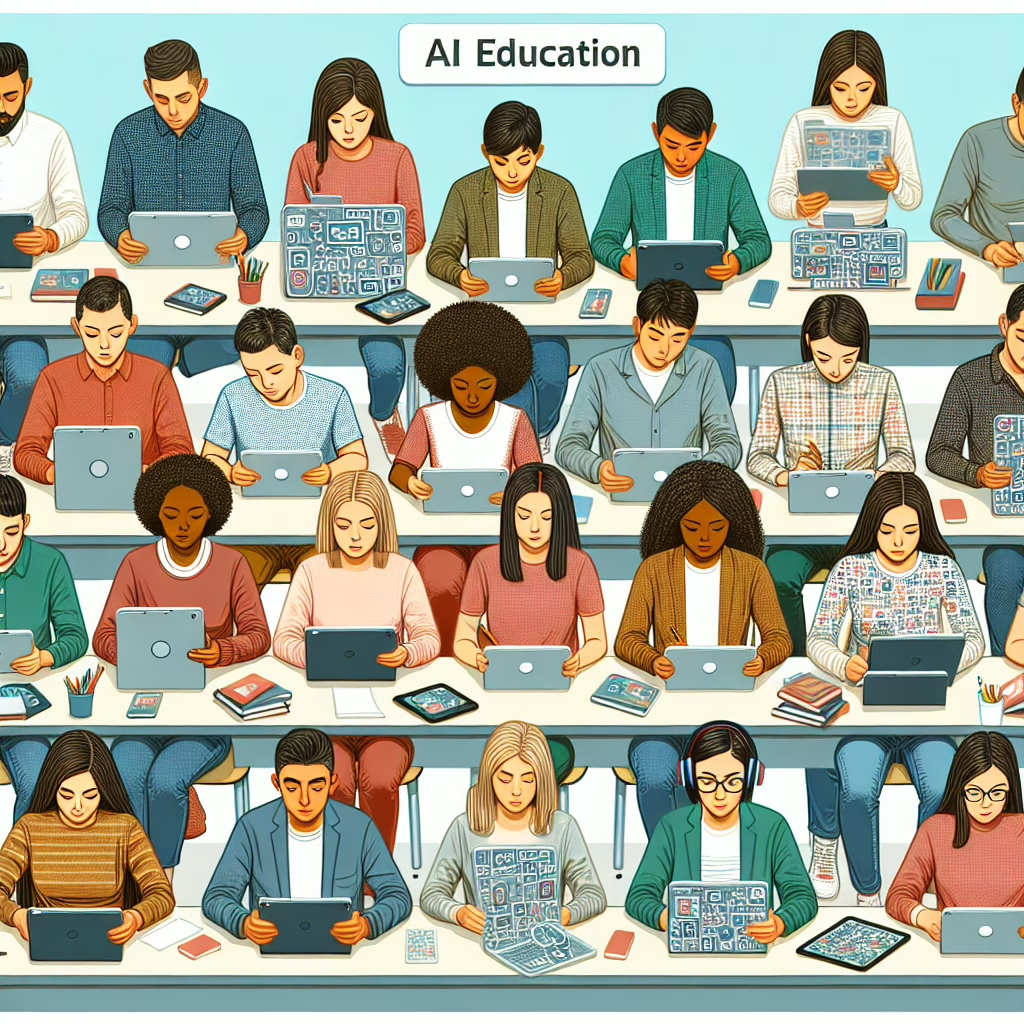AI in Education: A New Era for California Schools
In the grand tapestry of modern education, the introduction of AI (artificial intelligence) is like adding a vibrant splash of color. California’s State Superintendent has recognized this trend and taken a bold step by convening a statewide AI in education workgroup. With an urgent need for clear direction on how to integrate AI in public schools, the focus remains on ensuring that technology enhances rather than replaces the vital role of educators.
Why AI Needs a Seat at the Table
Imagine walking into a classroom where students are not just passive recipients of information but active participants in their learning journey, guided by intelligent tools that adapt to their needs. Sounds dreamy, right? Well, the reality is that AI can provide personalized learning experiences that cater to individual student strengths and weaknesses. But wait! Before we hand over the keys to the classroom to a robot, let’s take a moment to acknowledge that teachers are irreplaceable.
The real magic happens when educators leverage AI as their sidekick rather than viewing it as a rival. The workgroup aims to clarify how this technology can be integrated seamlessly while keeping educators at the forefront of teaching. After all, who else could explain why the mitochondria is the powerhouse of the cell with such flair?
The Urgent Need for Direction
As schools across California grapple with the implementation of various technologies, the necessity for guidelines around AI usage becomes crystal clear. This workgroup isn’t just a gathering of minds; it’s more like an Avengers-style assemble where educators, tech experts, and policymakers unite to craft strategies that ensure students thrive.
With an estimated 80% of jobs requiring some form of digital literacy by 2030, equipping students with essential skills is paramount. However, navigating the uncharted waters of AI can feel daunting. That’s why having a strategic plan will help teachers understand when to introduce AI tools and how to utilize them effectively.
The Role of Educators in an AI-Driven World
While AI can enhance educational experiences, it cannot replace the human touch that educators provide. Imagine a world where your math tutor is an algorithm—sure, it might solve equations faster than you can say “Pythagorean theorem,” but can it offer encouragement or empathy during those tough study sessions? Not likely!
Educators play a crucial role in interpreting data generated by AI tools and making informed decisions about instructional methods. The goal is not just to teach students how to use technology but also to foster critical thinking skills and creativity—qualities that machines still struggle to replicate.
Bridging the Gap Between Tradition and Innovation
The workgroup’s mission extends beyond just integrating new technology; it also seeks to bridge the gap between traditional teaching methods and innovative approaches. By collaborating with various stakeholders—teachers, parents, and tech developers—the group aims to create a balanced educational ecosystem where both human intelligence and artificial intelligence coexist harmoniously.
This collaboration is vital because it helps set realistic expectations about what AI can and cannot do. Schools should harness its potential while also maintaining their commitment to holistic education. After all, education isn’t merely about data points; it’s about nurturing well-rounded individuals who can navigate life’s complexities.
Looking Ahead: The Future of Education with AI
As we look forward to what lies ahead in 2025 and beyond, embracing AI in education presents immense opportunities. The key takeaway? Technology should serve as an ally rather than a replacement for educators. By combining human insight with artificial intelligence, we can create enriching educational experiences that prepare students for future challenges.
Moreover, AI in education can enhance administrative tasks, allowing educators to spend more quality time with students. For instance, AI can automate grading and provide insights into student learning behaviors, making it easier for teachers to tailor their approaches. The result? More engaged and successful learners who thrive in an increasingly digital world.
So here’s a shout-out to all educators out there: You’re not just teaching subjects; you’re inspiring future innovators! Let’s welcome AI into our classrooms with open arms while ensuring we remain at the helm of this transformative journey.
What are your thoughts on integrating AI into education? Do you see it as a boon or potential bane? Share your insights below!
For further reading on the intersection of technology and education, check out these insightful articles:
- CHAT: AI Technology Investment Strategy For Long-Term Capital Growth
- APS Considers Clear Backpack Policy and AI Technology to Boost Security
- HBCUs in the AI Era – Shaping Future Innovators
For more information regarding innovative teaching practices and technology’s role in education, feel free to explore additional resources at [Anchor Text](https://www.geekyopinions.com/tag/education).
### References
To learn more about the impact of AI in education, visit credible sources like Education Corner and EdTech Magazine for insightful articles.

